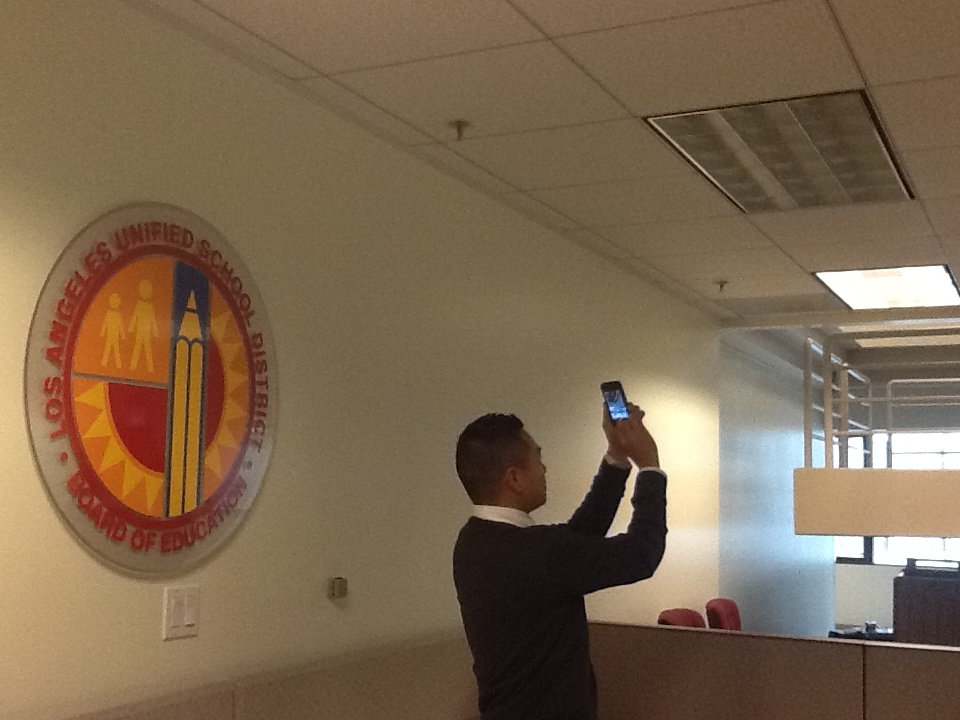Los Angeles schools crowdsource energy-efficiency measures with IBM's help


Danny Lu with the Facilities Services Division of the Los Angeles Unified School District sends photo for analysis.
A new reporting system that pairs mobile applications and IBM analytics software is being deployed to help help identify energy efficiency opportunities and maintenance challenges in the nation's second largest school district. The Los Angeles Unified School District (LAUSD) encompasses more than 14,000 buildings spread out over 710 square miles, so it isn't always easy to find or prioritize maintenance requests. The solution from IBM and IBM Business Partner CitySourced aims to address that challenge.
Here's how it works.
Students, teachers and other school staff members can help identify issues such as leaky faucets, faulty heating, ventilation and air-conditioning systems or inefficient lighting but sending text messages or photographs through the CitySourced mobile application. That information is analyzed by IBM software (specially IBM Maximo Asset Management); the location of the problem is associated with the photo by using geographic information software, developed by another IBM Business Partner, Esri.
Essentially, the solution allows the school district to crowdsource maintenance requests and take a step closer to running more efficiently. During the first eight months, more than 750 reports were filed.
"Each year, we found we were spending too much time, money and energy locating and reporting a problem before we even had the chance to fix it," said Danny Lu, business analyst with LAUSD, in a statement. "By finding a more efficient way to report and locate needed repairs, we are able to respond faster to server our campuses. The best part is that the solution is at the fingertips of most everyone on campus."
OK, so maybe this particular solution isn't green in the sense that it is JUST focused on saving energy throughout the district, but you can see how addressing leaks and climate control systems more quickly can help the schools decrease water and power consumption. Plus, they can potentially put more green back into curriculum, which is always a good thing.